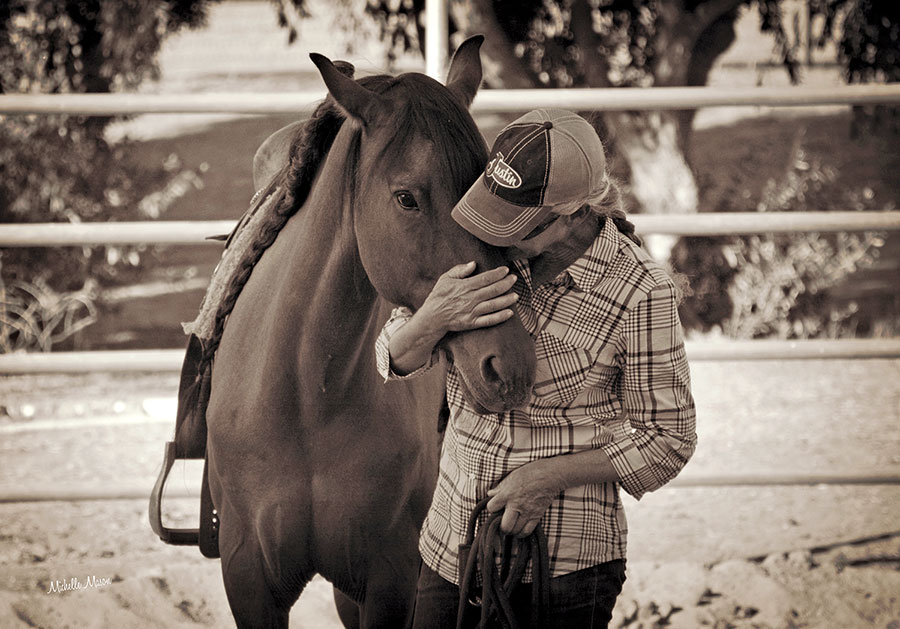By Sheryl Lynde | Horsetrader columnist
Character is forged when you dare to leave your comfort zone. It is built by being aware and true to who you are, by reaching to be better than you were yesterday, by having a willingness to grow, and by doing the right thing even when no one is looking.
Working with horses has always been a source of inspiration to know better, to be better. As quoted by Robert Iger, CEO of the Walt Disney Company: “to know what I don’t, and trust what I do know.”

If you are not progressing each day, then you are merely existing within the limitations of your comfort zone. Horses have taught me how to listen, how to be aware, what is too much, and what is not enough. They deserve the very best I can be. Horses have given me an immeasurable fullness and purpose to my life and to those that have been given much, much will be expected in return. I believe horse ownership comes with considerable responsibility. We are to care for their basic food and shelter needs, dedicate time for regular exercise, offer consistent and fair discipline that is always balanced with affection, and last but certainly not least, always be open to get credible help when needed. Applying these edicts consistently will prepare them well in the event that if anything happens to us, we can insure their future for a good home. I keep this in mind every day with every horse—that is my motivation.
Let’s talk about discipline. I’ve heard all the reasons why owners don’t correct behavioral issues when they surface. Allow me to share reasons as to why you should correct them.
It’s your job. I can’t stress this enough. An undisciplined horse is not only a danger to himself and those around him, but he isn’t a happy or content horse. An undisciplined child isn’t happy either. Just like horses, they feel safe in an environment where they have been provided clear and consistent boundaries. Providing these boundaries may be inconvenient and not what we had in mind at this particular time spent with our horse. We must consider character versus comfort. You are responsible for shaping the future of your horse.
For example, behaviors as seemingly innocuous as a horse crowding your space to the degree you need to take a step back, or a horse that walks off and/or bolts when you unfasten his halter, are red flag behaviors that give fair warning that injury is imminent. This is a disrespectful horse that is looking for boundaries and leadership, not a horse whose behavior deserves to be ignored or given treats.
I recently gave a demonstration at the Norco Horse Affair using a client horse that had never been in that kind of environment—covered arena, microphones, spectators, cows, etc. She had primarily been ridden within the confines of her boarding facility where everything was familiar. For the demo, I was working in an 80’ fenced area with the Mustang Challenge being held in the arena contiguous to our large pen. Before I worked her at liberty, I worked her in a halter and lead rope asking her to move her shoulders and hips, changing direction frequently and requiring different speeds. I was asked why I didn’t just start with liberty work, asking her for inside and outside turns. When this mare first came to me, when I led her into the round pen and unfastened her halter, she bolted off in the direction of her choice, allowing her hind feet to be within kicking range of me. Wherever I may be, whether the horse has experience in this particular environment or not, I need their attention. Spending a few minutes requesting her to perform different maneuvers while still haltered directs her attention to me rather than the distractions of a new place. When I released her halter she stood perfectly still awaiting my direction.
This was a great foundation for the rest of the demonstration, which was a success. After the demo, a spectator approached me and showed me the scar over her eye. She had unhaltered a horse that immediately bolted and kicked out, catching her in the face and crushing her eye socket. A horse shows you what they are going to do. The behavior may start out in a less demonstrative way, they may simply walk away, disinterested in your presence. Then in time it builds into a more energetic departure until they include a kick out as well. The first time, shame of the horse. The second time, shame on you.
Providing discipline takes time and effort, but your horses’ manners reveal your character and dedication to doing your job—which ensures your safety as well as the future of your horse. Priceless.
–Sheryl
Leave a Comment
All fields must be filled in to leave a message.